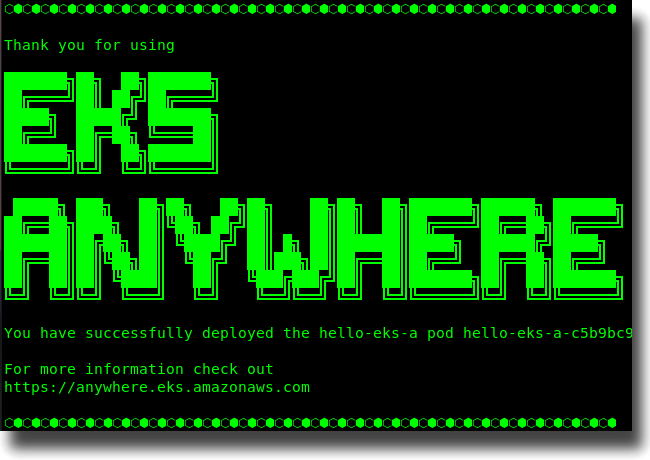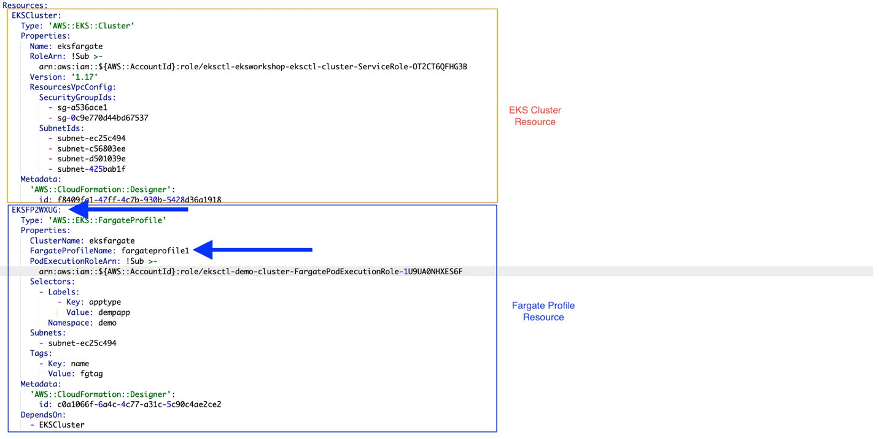Containers
Connect any Kubernetes cluster to Amazon EKS
Amazon Elastic Kubernetes Service (Amazon EKS) now allows you to connect any Kubernetes cluster to AWS and visualize it in Amazon EKS via the AWS Management Console. You can connect any Kubernetes cluster, including Amazon EKS Anywhere clusters running on-premises, self-managed clusters on Amazon Elastic Compute Cloud (Amazon EC2), and other Kubernetes clusters running outside […]
Using Amazon FSx for Windows File Server as persistent storage on Amazon EKS
Introduction As the adoption of container environments grows, there is an increasing need to cross-share data between monolith applications and cloud native applications and microservices. As a standard, the Container Storage Interface (CSI) allows exposing storage systems/backends to containerized workloads as persistent storage. In this blog, we will discuss and create persistent storage for cross-data […]
Implementing the Saga Orchestration pattern with Amazon EKS and Amazon SNS
This blog post proposes an ecommerce scenario with an Orders microservice, an Orders Rollback microservice and an Inventory microservice that communicate with each other. This communication happens while raising an order successfully or rolling back an order when the Inventory microservice reports an error. This communication is orchestrated with Amazon Simple Notification Service (Amazon SNS) […]
Getting started with Amazon EKS Anywhere
We are excited to announce the general availability of a new deployment option for Amazon Elastic Kubernetes Service (Amazon EKS) called Amazon EKS Anywhere. EKS Anywhere allows customers to create and operate Kubernetes clusters supported by AWS on customer-managed infrastructure. It provides consistent, automated cluster management for your hybrid needs. There are no upfront commitments […]
Amazon VPC CNI plugin increases pods per node limits
As of August 2021, Amazon VPC Container Networking Interface (CNI) Plugin supports “prefix assignment mode”, enabling you to run more pods per node on AWS Nitro based EC2 instance types. To achieve higher pod density, the VPC CNI plugin leverages a new VPC capability that enables IP address prefixes to be associated with elastic network […]
Fast NLP model development with containers on AWS Fargate
This post is contributed by Efi Gazarov, Cloud Infrastructure Team Leader at Amenity Analytics NLP: the key to unlocking the full potential of data sources NLP, or natural language processing, is used to understand, interpret, and process language the way a human would by using computational methods. It sits under the umbrella of AI, along […]
Introducing CloudWatch Container Insights Prometheus Support with AWS Distro for OpenTelemetry on Amazon ECS and Amazon EKS
You can use CloudWatch Container Insights to monitor, troubleshoot, and alarm on your containerized applications and microservices. Amazon CloudWatch collects, aggregates, and summarizes compute utilization information like CPU, memory, disk, and network data. It also helps you isolate issues and resolve them quickly by providing diagnostic information like container restart failures. Container Insights gives you […]
Use CloudFormation to automate management of the Fargate profile in Amazon EKS
Organizations are embracing microservices architectures and container-based deployments to gain agility, scalability, isolation, and separation of concerns. AWS Fargate, the serverless compute engine for running containers in the AWS Cloud, improves agility by taking away the undifferentiated heavy lifting of worker node provisioning and management. With Fargate, organizations can focus on building applications and application […]
A deep dive into Bottlerocket ECS Updater
Last month, we announced the general availability of the Amazon Elastic Container Service (Amazon ECS) optimized Bottlerocket AMI. Today, I would like to focus on the Bottlerocket ECS Updater. The ECS Updater is a service you can install into your ECS cluster that helps you keep your Bottlerocket container instances up to date. Before I […]
Using AWS Application Load Balancer path-based routing to combine Amazon ECS launch types
AWS container services offer broad choice and flexibility of tools to run containers. This provides customers with the flexibility they need to select the right platform for their workloads. Amazon Elastic Container Service (Amazon ECS) is a fully managed container orchestration service that enables you to deploy, manage, and scale containerized applications. Customers often ask […]









